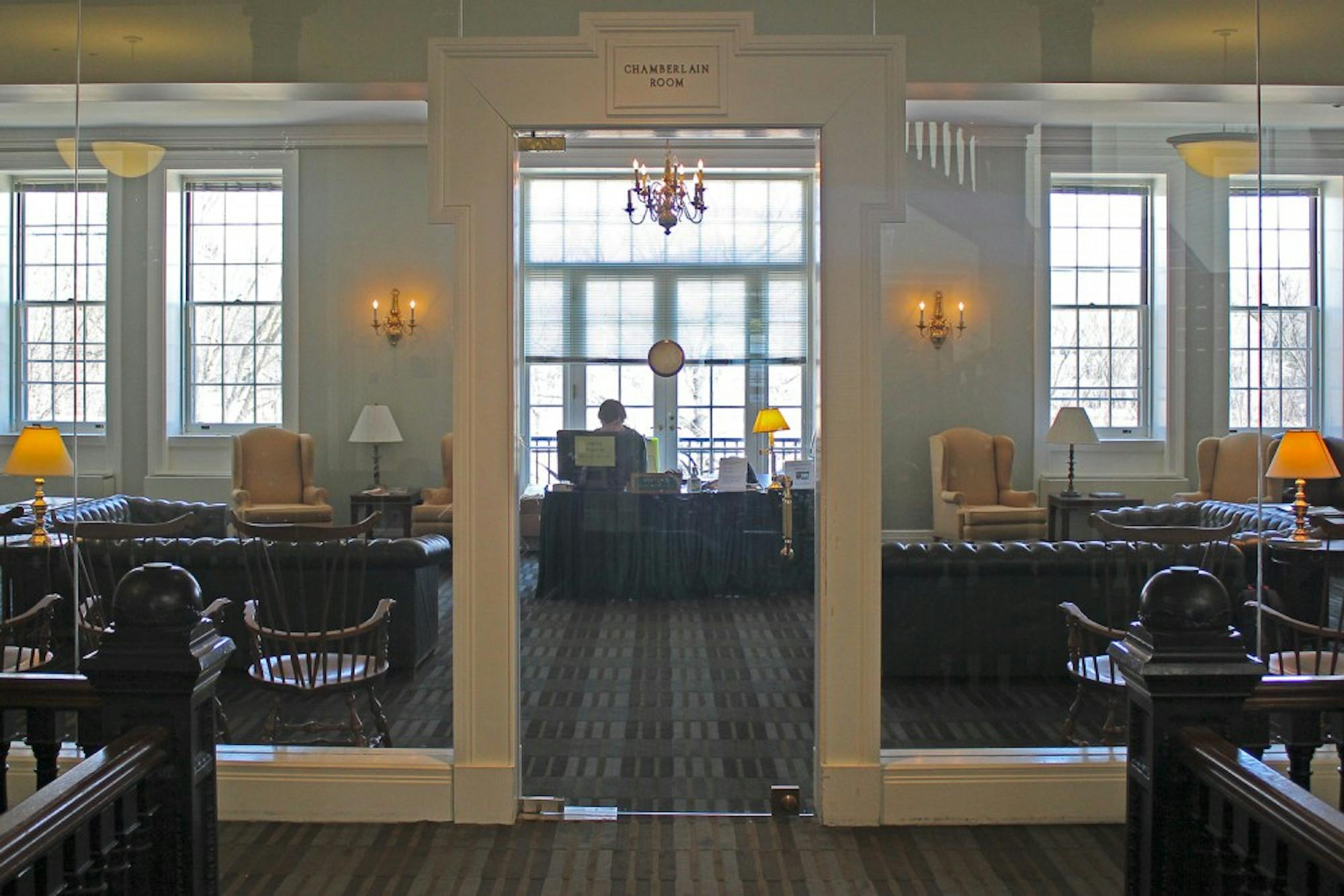Four hundred sixty-nine students were admitted to the Class of 2018 through the early decision process, the College announced on Dec. 11. The accepted students — selected from 1,678 early applicants — are intended to make up 40 percent of the Class of 2018, according to a College press release.
The early decision numbers reflect a 27.9 percent acceptance rate, a nearly 2 percent decrease from the early admissions rate for the Class of 2017.
The mean SAT score for admitted students is 2156, and the mean ACT is 32.1, the press release states. The average SAT is slightly higher than last year’s mean of 2141 for students admitted through the early decision process, as well as the averages of 2146 and 2144 for the Classes of 2016 and 2015 respectively.
Among students whose high schools report rankings, 34 percent of admitted students to the Class of 2018 are ranked first in their class, remaining relatively consistent with early admittance figures for the Class of 2017. Ninety-four percent of students are ranked in the top 10 percent of their class, an increase from last year's 86 percent.
The number of early decision applicants marked a more than 6 percent increase from last year. Despite a 12.6 percent drop in early applicants last year for the Class of 2017, the number of students admitted through the early decision process has remained relatively consistent over the years.
Head of Admissions Maria Laskaris indicated that the decision to stabilize early decision intake numbers is the byproduct of projected class sizes and applicant quality. “Over the past several years, the target size of the incoming class has grown from 1,090 students to 1,120 students,” Laskaris said. “Both [this] and the quantitative and qualitative strength of the early decision pool are factors we consider in deciding how many students to admit during the early decision selection process.”
The overall acceptance rate for the Class of 2017 was 10 percent, an increase from 9.4 percent for the Class of 2016.
The College postponed this fall’s early application deadline fromNov. 1 to Nov. 8after prospective students and high school counselors reported problems with the Common Application. Laskaris said that the difficulties caused by the Common Application did not adversely affect Dartmouth’s early decision review process. “The one-week delay did not negatively impact our ability to complete the selection process along the timeline we had identified for ourselves,” she said.
Cornell University, Columbia University, the University of Pennsylvania and Yale University also decided to postpone the early application deadline. Princeton University allowed applications to be submitted through the Universal College Application.
In the Ivy League, Columbia, Cornell, Brown, Dartmouth and Penn allow students to apply early decision, whereas Harvard, Princeton and Yale allow students to apply single choice early action.
According to Laskaris, early decision plans facilitate the creation of a deep and cohesive incoming class. She described the admitted early decision students as a “stable foundation” upon which to build the remainder of the Class of 2018.
Senior at the Gilman School in Baltimore Kyle Tarantino ’18 voiced his support for Dartmouth’s early decision plan. “Everyone says this, but the first time I stepped on the green I really did know Dartmouth was the right spot for me,” Tarantino I’m grateful I had the chance to indicate my preference for the college, and I think taking a big portion of the incoming class from early decision helps make sure that the incoming freshman class is excited to be here.
Scottsdale area senior Rajiv Ramaiah ’18 also said he was grateful for the early decision plan. He is excited to be admitted to his top choice school and relieved to have finished with the application process, he said.
Of the five Ivy League institutions with early decision policies, only three – Brown, Dartmouth, and Columbia – have released early decision results to students. Penn and Cornell will inform their admitted students on Monday afternoon.
Brown accepted 18.9 percent of early decision applicants. According to The Brown Daily Herald, this is the second-lowest percentage of students accepted to the University under its early decision plan.
Columbia has yet to make public the final admissions statistics for early applicants. Decisions were released Thursday via mail, following an early admissions season that saw a record number of applications submitted. According to the admissions office, Columbia University received 3,298 early decision applications, making this the biggest ED pool in its institutional history.
Harvard University accepted 21.1 percent of applications through their single choice early action program. This was the highest early action acceptance rate since 2011, when Harvard brought back their early action program.
Staff writer Laura Weiss contributed reporting to this article.




